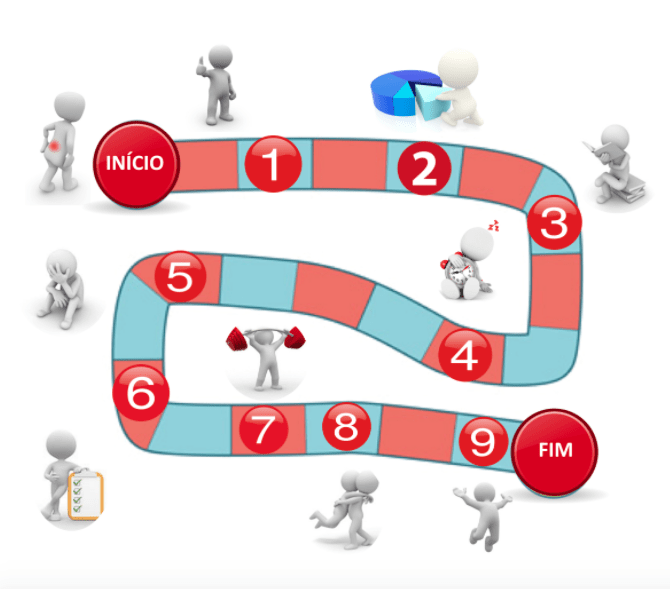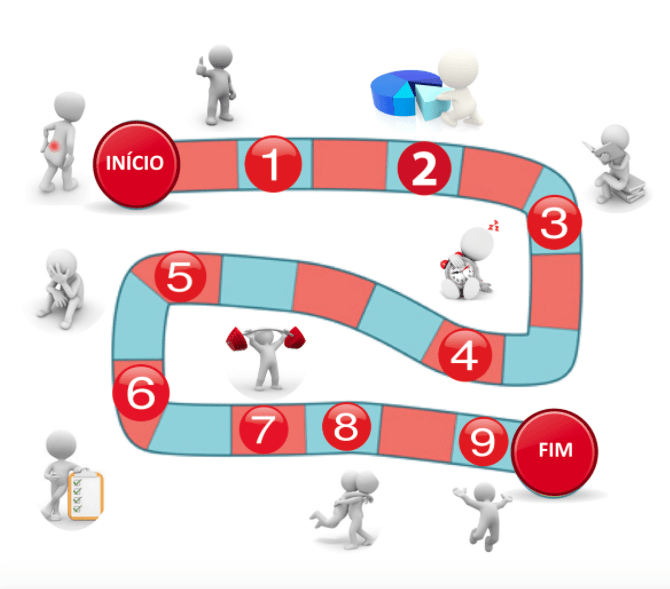Development of the first internet-delivery pain education intervention in Brazil
It is well established that pain, especially chronic pain, is a public health problem worldwide. Chronification of pain may be due to mismanagement of acute pain that can result in modifications in the peripheral and central nervous systems. Likewise, insufficient knowledge of chronic pain mechanisms and management can further create major human and economic costs for patients, families, and society. Patients who suffer from chronic pain may present with catastrophisation, fear of movement, stress, anxiety, high psychological distress, depressed mood, low self-efficacy and disability.
Education and behavioural orientation may play important roles for patients with chronic pain. However, if these interventions are based on a biomedical model they will may contribute to a nocebo effect. Patients with musculoskeletal chronic pain who receive explanations that are focused on fragile bones, joints and muscles may consider pain to be more threatening and present with lower pain tolerance, more catastrophic thoughts, and less adaptive coping strategies such as avoidance and excessive resting.
Pain education aims to improve knowledge and help patients to reconceptualise their pain and behavioural intervention encourages patients to make some modifications in their lives such as sleep hygiene, return to daily activities and exercise. These interventions contribute to reduce pain, disability, pain catastrophisation, and limited physical movement [1]. The mechanisms behind cognitive and behavioural interventions is not well understood, but it may be related to a cognitive-emotional modulatory effect [2].
A recently call to expand the availability of pain self management for the public was reinforced by McGuire, Henderson and Patrick McGrath [3]. Technology-based such Internet based or mobile device based (called as E-pain technology) can help with access to pain management. Previous systematic reviews and clinical trials found evidence that Internet-based treatments reduced pain, anxiety, depression and promoted significant improvements in disability.
Despite the burgeoning ownership of personal computers and smartphones two questions may arise: Which patients can benefit from this intervention? The study of Dear et al. [4] suggests that a broad range of patients may benefit from emerging Internet-delivered pain management programs and that it may not be possible to predict who will or will not benefit on the basis of patients’ demographic, clinical, and psychological characteristics. Are internet-based interventions consistent with studies of face-to-face pain management programs? In an other study from Dear et al.[5] the authors reported improvements on clinical measures of anxiety, depression and disability in three groups with different levels of clinical support (regular contact, option of contact and no clinical contact).
We do not have official prevalence data for chronic pain in Brazil; however, some studies suggest lies in the range of 4.2% to 51.4%, depending on the setting. It is possible that chronic pain prevalence in our country is not different from others. This implies that pain education may be also needed Brazil. Now, consider that Brazil is the largest country in South America and the fifth largest in the world and the population is estimated at more than 200 million — how can pain education be delivered on a sufficiently large scale?
According to the Digital in 2016 report by We Are Social, which considered digital, social and mobile usage around the world, Brazilians spend an average of 5.2 hours using laptops and 3.9 hours using mobile devices per day. This suggests that the internet could be an effective way to reach Brazilians with pain education. Therefore, we developed a free internet-based intervention called “Caminho da Recuperação” (Path to Recovery) for patients who suffer from pain.
The development process included a literature review (of clinical trials and systematic reviews), data extraction and website implementation. The intervention takes inspiration from common board games to use the idea of a journey that a main character (David), who suffers from chronic low-back pain, must take.
Along the journey, David encounters concepts about pain and behavioural changes that he must make so as to cope with pain. There are various points on the “Caminho da Recuperação”, each representing an important issue, such as: (1) acceptance, (2 and 3) education about pain, (4) sleep hygiene, (5) recognising stress and negative emotions, (6) increasing positive coping in lifestyle, (7) exercises, (8) communication, and (9) relapse prevention. Participant can click on each point to access a presentation that uses slides with short text and an illustrative figure. Slides transition automatically every five seconds and the participant can advance or rewind at any time. Clinicians or patients can also access a spreadsheets to facilitate the behavioural changes. For example, if a patient needs to improve his sleep quality, it is possible to download advices and also a guide to track his progress. All contents may also be accessed by a free mobile device app called EntendeDor (click on the link).
The “Caminho da Recuperação” intervention was launched in December 2016 and, to the best of our knowledge, it is the first internet-delivery programme considering pain education and behavioural strategies in Brazilian Portuguese. We believe that this program may be particularly useful for patients in large and low-income countries such as Brazil, or might support clinicians in daily practice. We also believe that not all patients need to perform all the way of “Caminho da Recuperação”. In this case, clinicians should guide patients towards the most suitable interventions.
We believe that it is the first step to spread pain education in our country. E-pain technology is a promising new technology. However, it is important to highlight that some aspects need to be addressed in further studies such as the best format of delivery, ethical aspects, cost-effectiveness and the profile of patients who would benefit most from this intervention.
About Felipe Reis
 Prof. Felipe Reis is a Brazilian Physiotherapist who graduated from the Federal University of Rio de Janeiro (1999). He has received his Masters and Doctoral degrees in Medical Science from the Federal University of Rio de Janeiro (UFRJ). He is a Physiotherapy professor at the Federal Institute of Rio de Janeiro (IFRJ). He works in the Advanced Neuroimaging Laboratory at Federal University of Rio de Janeiro (UFRJ) developing research about Neuroscience of Emotion, Cognition, Behavior and Pain. In the last years, he is working as a researcher collaborator at McGill University. He is also the coordinator of the Pesquisa em Dor website.
Prof. Felipe Reis is a Brazilian Physiotherapist who graduated from the Federal University of Rio de Janeiro (1999). He has received his Masters and Doctoral degrees in Medical Science from the Federal University of Rio de Janeiro (UFRJ). He is a Physiotherapy professor at the Federal Institute of Rio de Janeiro (IFRJ). He works in the Advanced Neuroimaging Laboratory at Federal University of Rio de Janeiro (UFRJ) developing research about Neuroscience of Emotion, Cognition, Behavior and Pain. In the last years, he is working as a researcher collaborator at McGill University. He is also the coordinator of the Pesquisa em Dor website.References
- Louw, Adriaan, et al. “The efficacy of pain neuroscience education on musculoskeletal pain: A systematic review of the literature.” Physiotherapy Theory and Practice. 32;5 (2016): 332-355.
- Nijs J, Van Oosterwijck J, De Hertogh W. Rehabilitation of chronic whiplash: Treatment of cervical dysfunctions or chronic pain syndrome. Clin Rheumatol. 2009;28(3):243–51.
- McGuire, Brian, Ellen Henderson, and Patrick McGrath. “Translating e-pain research into patient care.” Pain. 158; 2 (2016): 190–193
- Dear, Blake F., et al. “The Pain Course: a randomised controlled trial of a clinician-guided Internet-delivered cognitive behaviour therapy program for managing chronic pain and emotional well-being.” Pain. 154;6 (2013): 942-950.
- Dear, Blake F., et al. “The Pain Course: a randomised controlled trial examining an internet-delivered pain management program when provided with different levels of clinician support.” Pain. 156;10 (2015): 1920 – 1935.
Commissioning Editor: Neil O’Connell; Associate Editor: Tory Madden




